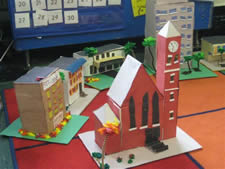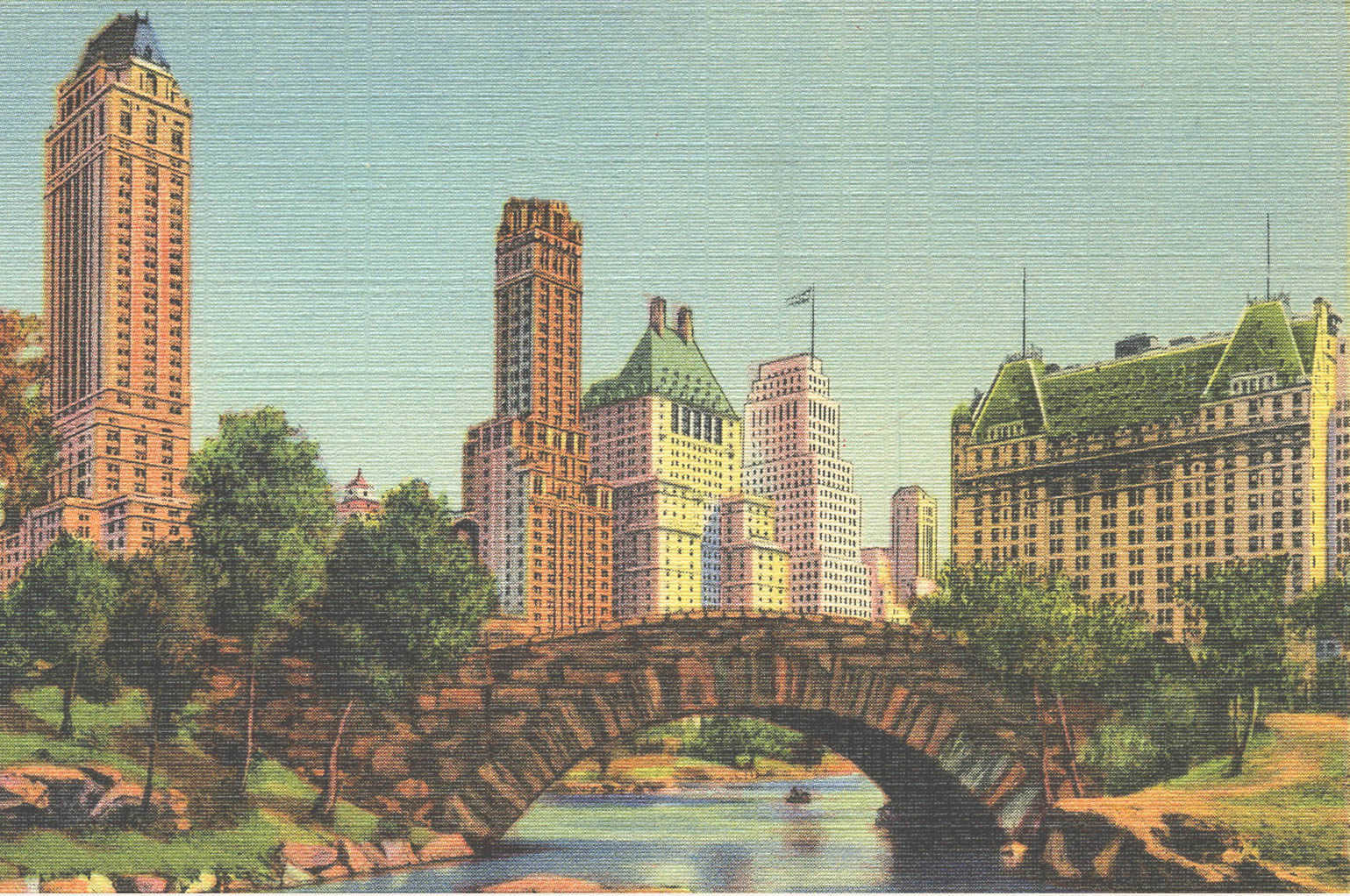
Kindergarten Greenwich Village Library
My programs use architecture as a lens through which children can learn about local history, immigration, government, geography, and other themes in the social studies curriculum. I always work in conjunction with the teacher to devise a program that connects to and enhances the work that is already being done in the classroom, as well as supports state and local learning standards.
Although the focus is usually social studies, my programs are truly cross-curricular. For example, through model building, students may not be aware that they are measuring, using scale, geometry, and computation. Learning about bridges (like the Brooklyn Bridge) not only enables kids to learn the history of one of America’s greatest monuments, but also to learn the science and engineering of bridges. Introducing students to architectural vocabulary increases literacy and observational powers. All of my programs are hands-on and arts-based.
Just a few examples of some of my K – 12 projects:
- The history of the Rockaways through historic photos, architectural walking tours, and then model building of the Rockaways past, present, and future. (4th grade)
- The story of the Morris-Jumel Mansion, a 1765 house museum in Washington Heights through the creation of an original 9-minute film. Students wrote, acted, directed, and filmed on site. (6th and 7th grade)
- The concept of neighborhood with a focus on Greenwich Village and its components, i.e., school, residences, places of worship, library, post office, stores, police station, fire station, hospital, etc. Build a model of the neighborhood. (Kindergarten)
- Discover the history of Crown Heights and Bedford-Stuyvesant through primary-source research (i.e., newspapers, maps and atlases, diaries and letters, photographs, and the buildings themselves) to create a podcast neighborhood tour written and given by students. (12th grade)
- Identify designated and undesignated landmarks in Chinatown. Visit the sites, learn their histories, and build models of them. Advocate to the city’s Landmarks Preservation Commission for the designation of the undesignated landmarks that students have identified. (2nd grade)
- Learn about the history and design of Central Park through site visits, readings, walking tours, and scavenger hunts. Students create an original book that tells the story of Central Park and its creators, Olmsted and Vaux. (3rd grade)
- Use the NYC subway system as a vehicle to learn about local geography, history, architectural design, construction, and urban development. Students build models of different train stations representing the different time periods of subway construction. (2nd grade)
- Travel the world through architecture and consider how climate and materials shape local, indigenous architecture. Students research different regions of the world and build representative models from countries such as Kenya, Iceland, Finland, Brazil, Indonesia, Mali, American grasslands, and more. (3rd and 6th grade)
